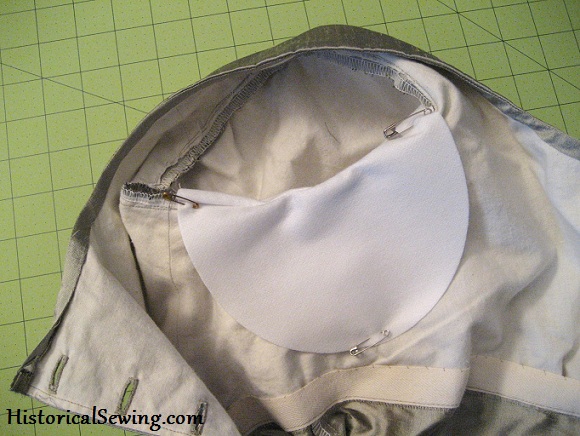You’re standing under the two foot square of shade under the tree, fanning yourself as fast as possible. The cool air you crave is elusive…. Twirling around and around, you laugh and collide with fellow dancers on the packed floor…. If you do any sort of costume events in warm weather or in a ballroom, Read More...
Tag: Sheer Dress
Fabric Choices for 19th C. Costumes – Part 3 – Cotton
Do you have a type of fabric that just calls to you? You know, the type that even though you’re looking for something completely different in the fabric store you just can’t help walking over to it and reveling in its deliciousness. Yeah, me too. It’s called cotton. Read More...
Fabric Choices for 19th C. Costumes – Part 1 – Linen
I think linen is lovely even though I don’t use it much. I’ve had to almost force myself to sew with it. But why? My very first truly historical costume (not counting that blue velvet Italian Renaissance gown or any other Halloween stuff) was an 1880 polonaise courtesy of Past Patterns. You know the pattern. Read More...
Embroidered Voile Regency – Cutting & Pattern Work
Initial progress has been made on my ca. 1811 embroidered voile Regency gown. I pulled out all my most recent dress patterns and decided to go with a combo of my last Regency ballgown and the bodiced petticoat I made for under it. Here I’m tracing the original pattern. I then cut down the neckline, lowered Read More...
The Drool Fest
What better way to enjoy historical fashion than to look at the real thing! I had the grateful opportunity to visit the Los Angeles County Museum of Art (LACMA) over the weekend. Through rain, fog, bright sunshine and a blowing snow storm (complete with police escort!) my husband and I got to gasp, drool and Read More...
Mid-Victorian Sheer Dresses
In the 1860s women made one-piece dresses in sheer fabrics for warmer weather. In the north, the popular fabric was barège, a thin gauze fabric made from wool or a wool blended with silk or cotton. In the southern climates, sheer solid or printed cottons were fashionable. Read More...



